A Rainbow of Energies
“What is a god? A god is a personification of a motivating power of a value system that functions in human life and in the universe.”
― Joseph Campbell
The gods have been personified in many ways by the various cultures of the world. Some know these same powers as “archangels” or “planetary spirits”. In Western astrology, we associate them with the planets and call them by the names of Roman gods. But what they are essentially is invisible energies — energies that do things, each with its own frequency and its own type of influence. The most universal and meaningful associations with these life powers that I know of is their correspondences with colors.
"Colors express the main psychic functions of man." ~ Carl Jung
Colors and Astrology
The above illustration shows how the colors fit into astrology. The model is the traditional RYB color wheel used for paint and design. This is the kind of diagram that can yield almost endless insight with continual contemplation over time.
The Circle around the perimeter represents Time. There we see the qualities of Time in colors associated with the 12 signs of the Zodiac.
The hexagon within the Circle represents the life energies from which half of the signs derive their qualities, in terms of color and planet.
The Center of the Circle represents the ultimate Source of All Things in absolute Timelessness. It belongs to no point in Time more or less than any other. The Center’s absoluteness makes White (all of the colors combined) and Black (no color at all) its equivalents in terms of color. They are extreme opposites, yet they are one, like the two sides of a single coin. As planets, these energies are Pluto and Neptune respectively.
The Primary Colors = Fire
The triangle around the Center represents the 3 Primary Colors: Red, Yellow, and Blue, which are fundamental and cannot be created by mixing other colors together. As the spectrum colors ‘closest’ to White, they correspond to the spontaneous motivational impulses of the Fire element, or intuition. If Fire were a section of an orchestra, it would be the brass.
As planets, the Primaries are Mars, the Sun, and Jupiter. The points of the triangle indicate each planet’s rulership (reflected qualities) of the 3 Fire signs in the Zodiac, which share their colors.
The Secondary Colors = Air
A hexagon is formed with the addition of the 3 Secondary Colors, which are blends (‘offspring’) of the Primaries: Orange, Green, and Purple. They correspond to the mental functions of the Air element, or thinking. If Air were a section of an orchestra, it would be the woodwinds.
As planets, the Secondaries are Mercury, Venus, and Uranus. Their points indicate their rulerships of the 3 Air signs in the Zodiac, which share their colors.
In the Zodiac, every other sign is either a Fire sign or an Air sign, sharing the Primary or Secondary Color of its ruling planet, and reflecting its qualities. These 6 signs are the “positive” or “masculine” signs.
The Tertiary Colors = Water & Earth
"Since psyche and matter are contained in one and the same world, and moreover are in continuous contact with one another and ultimately rest on irrepresentable, transcendental factors, it is not only possible but fairly probable, even, that psyche and matter are two different aspects of the same thing." — Carl Jung
The 6 signs in between the masculine ones are the Water (psyche; nonphysical form & feeling) and Earth (matter; physical object & sensation) signs. Theirs are the 6 Tertiary Colors, each a blend of its adjacent neighbors (as though joining with them to form a Circle). If Water were a section of an orchestra, it would be the strings. If Earth were a section of an orchestra, it would be the percussion.
These 6 in-between signs are “negative” or “feminine”, because in them the formless masculine planetary energies take form. Here the term “negative” doesn’t mean inherently “bad”, but refers simply to the impermanent nature of forms.
Forms serve purposes and are neither bad nor good in themselves. But as solid and permanent as many forms seem to be, ultimately none of them really is. Eventually we outgrow, consume, or abandon them, and they dissolve or morph into something else. We can have bad experiences with the feminine signs if we overvalue forms in the mistaken belief that they won’t ever change. Good comes from those bad experiences when we learn from them and get our perspectives better centered.
4 of the feminine signs are ruled by planets in the hexagon whose colors don’t match them, apparently connected with them through their orbit patterns (a different diagram) rather than through color. The other 2 feminine signs are ruled by planets not part of the inner hexagon at all: Saturn and the Moon.
Life ‘Breathes’ Out and In
Life ‘descends’ from the Source into physical manifestation from the Center out, like a blooming flower. Then, as it develops awareness, it ‘ascends’ back to the Central Source.
As human spirits traveling through Time in physical bodies, each of us is continuously developing awareness of all the life energies within. But how can our awareness take us back to the mysterious, ineffable Source?
The color model shows us that we are naturally aligned with the Source when we express all of the ‘colors’ within us clearly and in balance. In the orchestra model, the ‘conductor’ is the Source, and we’re aligned with the ‘Conductor’ when we’re ‘playing all of our instruments’ well and in harmony.
In this series, we’ll take a close look at the planet that rules the sign of the month. We’ll observe its associated color, its legitimate influence in life, and symptoms typically experienced when it’s somehow out of balance. We’ll also see an expression of its basic influence in music and in tarot, as cards of the minor arcana.
Amber
This is the Tertiary color Yellow-Orange, which is more orange than pure Yellow. It’s the complement, or polar opposite, of the Tertiary color Violet.
Amber carries feeling, trust, and attachment that Orange doesn’t have, but it lacks the individuality, capability, self-confidence, and autonomy of pure Yellow.
Amber is associated with:
Security
Trust
Energy & Vitality
Emotional Warmth
Negative associations include:
Insecurity
Cowardice
Negative Emotions



The Moon
Most of the planetary energies this side of Neptune/Pluto are ‘masculine’, in that they are active forces; they do things. The Moon and Saturn are very different from them. They are both ‘feminine’ planets, in that rather than generating forces, they receive impressions of them, containing and preserving them in forms.
In fact, in themselves the Moon and Saturn govern not only two of the feminine Zodiac signs (Cancer and Capricorn), but also both of the feminine Elements, Water and Earth respectively. While the laws of Saturn control conditions of aging material objects in Time and Space (Earth), the Moon rules the non-material tides of feeling and the retention of memories in the unconscious mind (Water).
The Moon is the mostly-unconscious seat of feeling, and the repository of all of our memories and habits. As a nonverbal archetype, the only ‘language’ by which she can express herself is the Neptunian language of symbolic intangible forms, hence her moniker, “The Treasure House of Images.”
As Saturn is the archetypal ‘Mother’, keeping her child safely contained within a strict boundary, so the Moon is the dependent ‘Child’ so contained. To understand the child, we need first to consider it in the context of the matrix within which its development begins.
A simple metaphor for this parent-child symbiosis is a container of water. The firm container sets a boundary (Saturn) beyond which it does not allow the shapeless water (Moon) to go. So does the parent set a supportive but limiting boundary around the clueless child, based (presumably) on the natural laws of the material world. The child, dependent on the parent for safety, finds comfort in the coziness of conformity to the established mold and “being just like Mommy”.
For example, take the natural law of gravity: A parent places a creeping infant in a playpen to prevent it from creeping unknowingly into danger. Later the parent holds the toddler’s hands for support as it learns to walk. Once the child is walking, the parent warns the child against recklessness (Slow down — be careful — fall down, go boom!) The child heeds the parent’s warning (stays within the boundary), and all is well. Or, the child ignores the parent’s warning, trips and falls onto the hard floor (crashes into the boundary), bursts into tears, and remembers the experience. One way or the other, the child learns to avoid hazards posed by the natural fact of gravity. The parent warns of such dangers from experience; the child obeys the warnings or begins to accumulate experience of his own, firsthand. Any way it plays out, the child ends up forming habits.
All the clueless, impressionable child wants is to avoid running afoul of authority, and flow instinctively through a safe, predictable routine. Habitual routines of approved activities keep the child feeling safe and comfortable, and establish his or her sense of what is “normal”. In anyone’s life, the Moon is all about that personal sense of “normal”.
The laws of Nature determine some ways in which “normal” is the same for everyone; for example, no matter what, we all have to eat and sleep. On other levels, “normal” is different for different people and subject to change. Certain customs are normal only for those living in a particular culture or era. Communities have traditions normal to themselves but not necessarily to their neighbors, and each family has its own version of “normal”. In childhood, we adapt to all levels of normality in a tribal way that may no longer be appropriate to us as individual adults whose needs have evolved. All of that belongs to the Moon, which is basically whatever we are accustomed to, whether since childhood or since more recent changes, and whether we know it or not.
The Moon remembers everything we’ve ever experienced, both good and bad, since our life began, including all “forgotten” content. The Moon remembers especially the fundamental ‘programming’ received from family influences during childhood, hence her associations with family and physical/emotional nurturing. No matter our chronological age, our inner Moon is always like a little child — at least partially programmed, sensitive, and (more or less) impressionable.
"A complex is a cluster of energy in the unconscious, charged by historic events, reinforced through repetition, embodying a fragment of our personality, and generating a programmed response and an implicit set of expectations." — Carl Jung
We experience this childlike Moon’s association with feelings in response to new events. What we feel is based on our Lunar programming and what a new event evokes of it for us, though consciously we may have no idea why. Something “makes us feel” the way a similar past pleasure or injury (perhaps now forgotten) made us feel, and we like it or dislike it accordingly, without conscious reason. Whether or not we’d be wise to act on our feelings is a question beyond the scope of the Moon, who never questions anything (though other planets may, as their functions in us develop).
Our Lunar unconscious mind with its programming is supposed to be a natural ‘autopilot’ that spares us the need to evaluate consciously every little thing we do. Sometimes, as adults, we discover content in it that no longer serves us well, or maybe never did. While we can’t override laws of Nature, we don’t have to live with unnecessary interference from our own unconscious mind. Using regular positive affirmations, we can ‘reprogram’ an unwanted habit or destructive memory with an ‘update’ that is positive and supportive.
Because the unconscious doesn’t respond to analysis or logic, we can’t change a habit with a mere mental decision. To reprogram, we need to address our Lunar self in the language she knows, which is images that express or evoke feelings. Treating her like the little child she is, we lull her into compliance with patient, hypnotic repetition of rhythms, rhymes and imagery easily felt and remembered. The most effective affirmations are whimsical sing-song rhymes, like the ones that impress early lessons on small children in the nursery. (Better yet if rhymes are sung, danced, or acted out with motions or gestures.)
In case you’ve forgotten about nursery rhymes, here are a few examples:
MARGERY DAW
See Saw Margery Daw,
Johnny shall have a new master,
Johnny shall earn but a penny a day.
Because he can't work any faster.THE ALPHABET SONG
A - B - C - D - E - F - G
H - I - J - K - L - M - N - O - P
Q - R - S - T - U and V,
W - X - Y and Z.
Now I know my A - B - C
Next time - won't you sing with me?ONE, TWO, THREE, FOUR, FIVE
One, two, three, four, five,
Once I caught a fish alive,
six, seven, eight, nine, ten,
Then I let it go again.
Why did you let it go?
Because it bit my finger so.
Which finger did it bite?
This little finger on the right.We can make up a new rhyme to affirm our shift to a new habit, or we can adapt an old one. For example, to correct an unhealthy sleeping habit, we might repeat something like this to our inner Moon:
Early to bed and early to rise Is making me healthy, wealthy and wise.
When our Lunar self gets our message, she’ll stop the inner sabotage and start prompting us to feel like doing the action we’ve been affirming. As a result, we’ll be more comfortable in our own normal routine, just as the Moon needs us to be.
This calm, rhythmic music by Erik Satie expresses the normal, comfortable routine of the well-adjusted Moon.
Gymnopédie No. 1
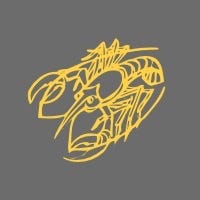
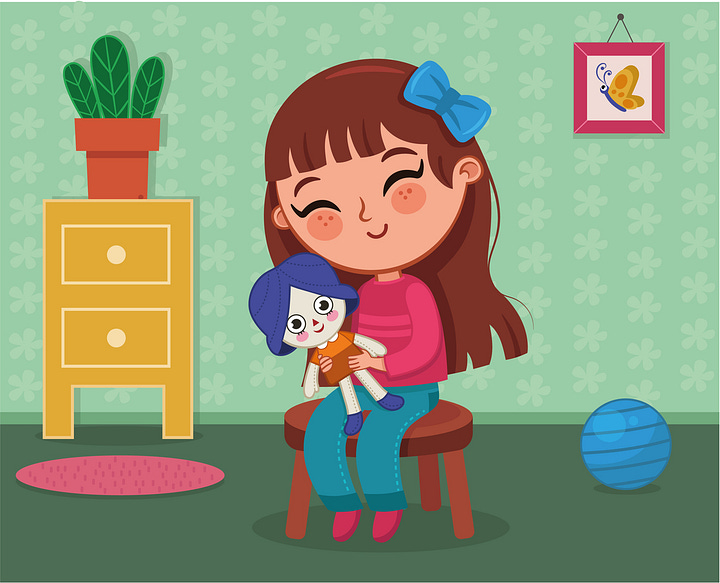
The Moon Rules Cancer
Read about Cancer (Amber) here:
Tarot and the Planets
In tarot, the planets have their correspondences in the cards of the Minor Arcana. Each of the 10 numbers corresponds to a planet. There are 4 cards to a number, one for each of the 4 elements:
Wands = Fire
Swords = Air
Cups = Water
Pentacles = Earth
I’ll give you descriptions of the cards in my deck, along with the interpretations I generally use for them in divination (adapted to context as needed). If you read tarot, the meanings you use may be different from mine, which is fine.
The Nines of the Minor Arcana
The tarot Nines are the Moon cards, and they all represent feelings. They signify not actual events, but the way someone feels about whatever is going on, whether justifiable or not.
Reversed, a Nine indicates a feeling opposite the feeling indicated by the upright card. Sometimes a change of feeling is implied.
Nine of Wands
Upright - Inertia. The thought-free trance of doing things “on autopilot”, the way one usually does them.
Reversed - An interruption or change in routine; doing things differently from the usual way.
Nine of Swords
Upright - Fear, Worry. Apprehension around something one cannot control.
Reversed - Fear, or a threat of danger, is not (or no longer) felt. There is now no sense of worry or dread.
Nine of Cups
Upright - Emotional satisfaction and contentment. Good feelings, as when a wish comes true.
Reversed - Emotional dissatisfaction and discontent. Disappointment, as when a hope or happy expectation is denied.
Nine of Pentacles
Upright - Physical Security and Comfort. Satisfaction in the feeling that material needs are being met.
Reversed - Physical Insecurity and Discomfort. Dissatisfaction due to a feeling that some material need is lacking.








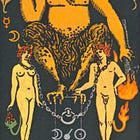
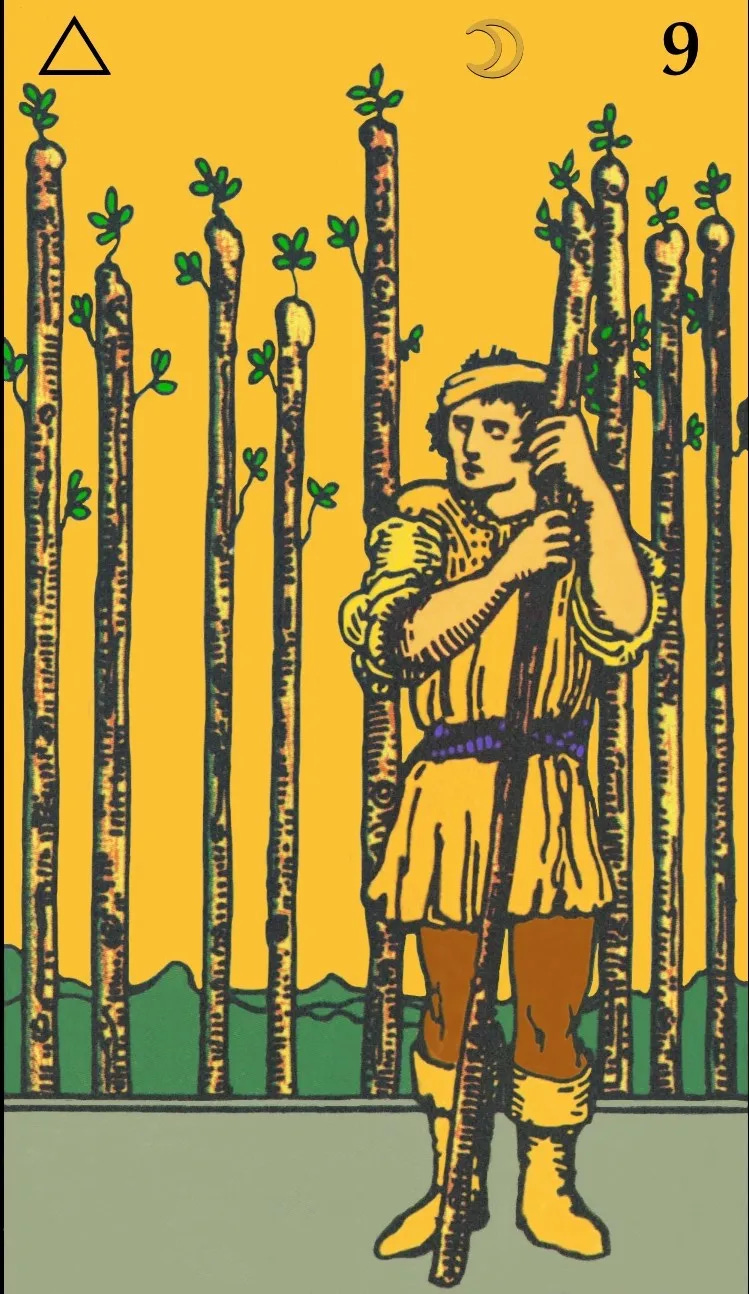

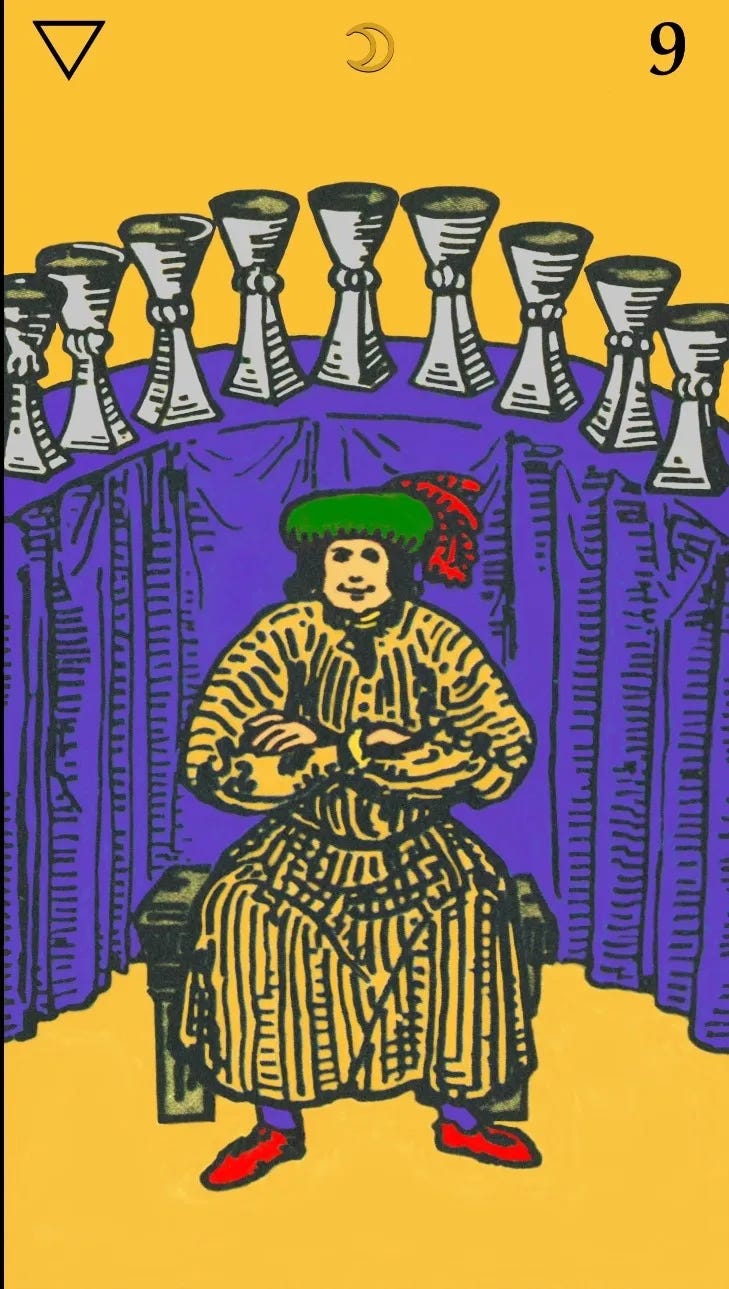

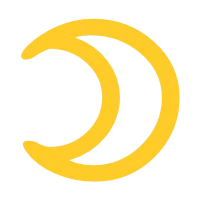

What a lovely treasure your page is! Thank you. Especially now with all the fear and turmoil going on. I’ll be back. 💗